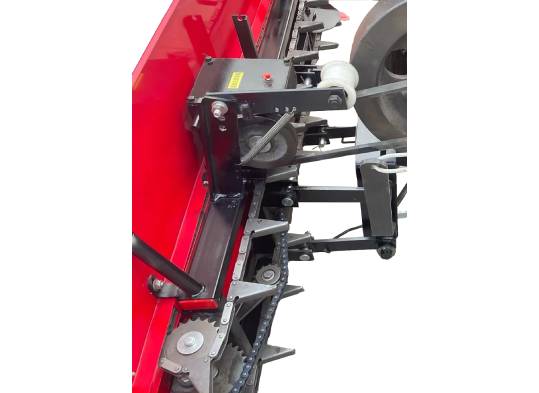rice cutting and binding machine
The Evolution and Importance of Rice Cutting and Binding Machines
Rice is a staple food for billions of people around the world, and its cultivation is a key part of agriculture in many countries. The process of harvesting rice, traditionally labor-intensive, has undergone significant transformation with the advent of technology. Among the innovations that have markedly improved the efficiency of rice production are cutting and binding machines. These machines have revolutionized the way farmers harvest rice, making the process faster and more efficient.
Historical Context
Historically, rice harvesting was done manually, involving the use of sickles and labor-intensive methods. Farmers would spend long hours in the fields, working under the sun to gather their crop, which not only consumed time but also increased the chances of loss due to adverse weather conditions. In many parts of the world, family and community labor played a crucial role in the harvesting process, often leading to a celebratory atmosphere when harvest time arrived. However, with the growing population and increasing demand for rice, the need for more efficient harvesting methods became apparent.
The Advent of Mechanization
The introduction of mechanical harvesting equipment in the mid-20th century marked a turning point in rice farming. Rice cutting and binding machines are designed to cut the rice stalks and bundle them together swiftly, making the harvesting process significantly quicker than manual methods. These machines, commonly known as rice harvesters or combines, come equipped with sharp blades that slice through the stalks and a binding mechanism that ties the cut bundles.
The efficiency of these machines is evident in their ability to harvest large swathes of rice fields in a fraction of the time it takes for manual harvesting. For instance, while a group of laborers might take days to harvest a hectare of rice, a modern rice harvester can accomplish this in a matter of hours. This not only saves time but also reduces labor costs, allowing farmers to allocate their resources more effectively.
Technological Advancements
rice cutting and binding machine

Modern rice cutting and binding machines have evolved with advances in technology
. Many machines are now equipped with GPS systems that allow for precision farming, ensuring that every inch of the field is harvested without overlap or missed spots. Additionally, innovations in engine efficiency have made these machines more economical, consuming less fuel while providing more power.Some machines come with the capacity to thresh the rice as well, combining multiple processes into one operation. This integration reduces the need for additional equipment and minimizes the handling of the rice, which can lead to breakage and loss of quality.
Environmental Considerations
While rice cutting and binding machines have enhanced efficiency, they also raise concerns regarding their environmental impact. The use of such equipment can lead to soil compaction and reduced biodiversity in the fields. Therefore, it is essential for farmers to practice sustainable farming techniques, such as rotating crops and maintaining natural habitats within their fields, to mitigate these effects.
Implementing eco-friendly technologies and practices alongside mechanization can ensure that rice production remains sustainable. For instance, using machines that emit lower carbon emissions can contribute to minimizing the ecological footprint of rice farming.
Conclusion
The introduction of rice cutting and binding machines has undoubtedly transformed the landscape of rice harvesting. By improving efficiency, reducing labor costs, and supporting larger-scale production, these machines play a vital role in meeting the ever-increasing global demand for rice. However, as with any technological advancement, it is crucial for farmers to balance efficiency with sustainability. By embracing both mechanization and environmentally friendly practices, the agricultural sector can protect vital natural resources while securing food for future generations. Through this careful stewardship, farmers can continue to thrive in an industry that is both ancient and ever-evolving.
Latest news
-
When to Upgrade Your Old Forage HarvesterNewsJun.05,2025
-
One Forage Harvester for All Your NeedsNewsJun.05,2025
-
Mastering the Grass Reaper MachineNewsJun.05,2025
-
How Small Farms Make Full Use of Wheat ReaperNewsJun.05,2025
-
Harvesting Wheat the Easy Way: Use a Mini Tractor ReaperNewsJun.05,2025
-
Growing Demand for the Mini Tractor Reaper in AsiaNewsJun.05,2025







